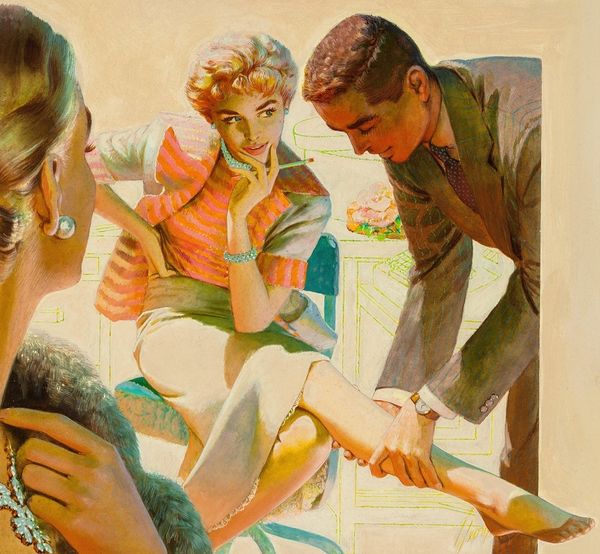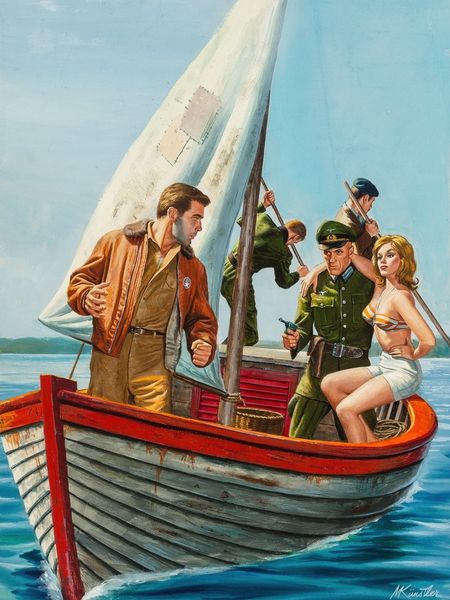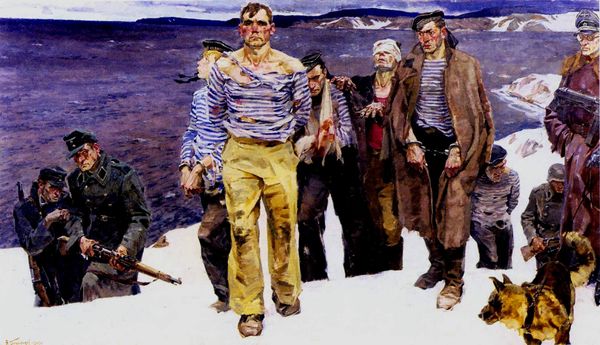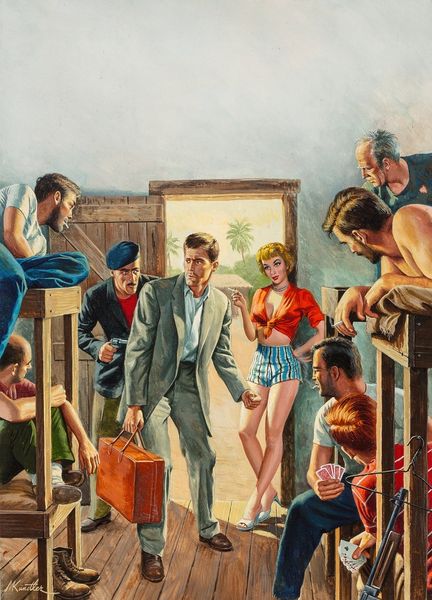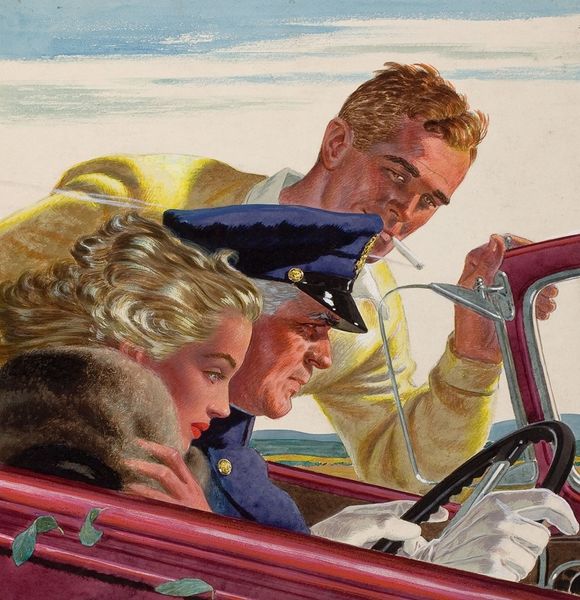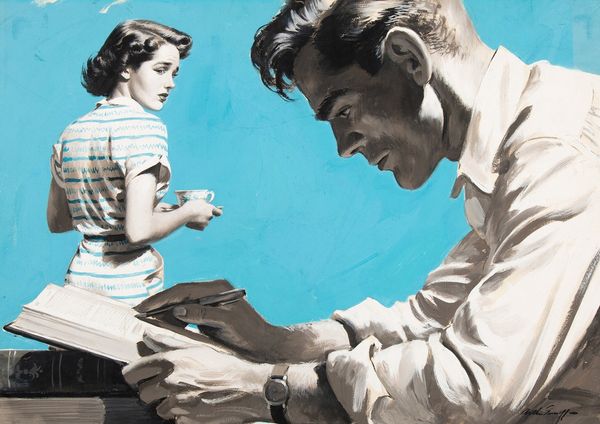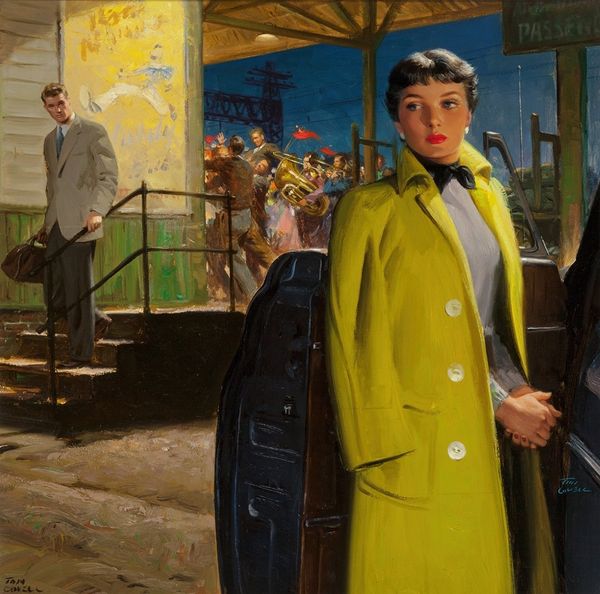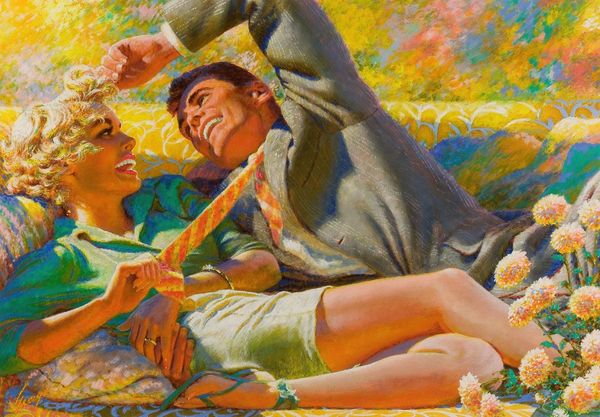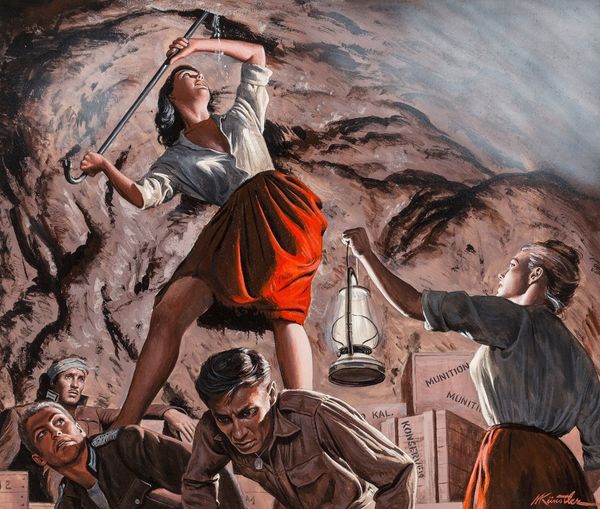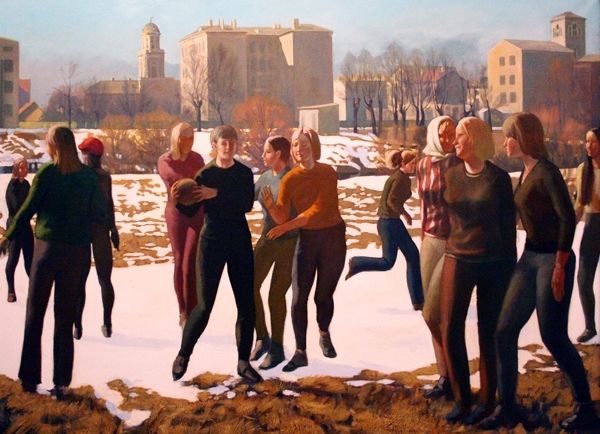
painting, oil-paint
#
narrative-art
#
painting
#
oil-paint
#
figuration
#
oil painting
#
acrylic on canvas
#
genre-painting
#
realism
Copyright: Modern Artists: Artvee
Editor: We're looking at Mort Künstler's "Siberian Temptress," an oil painting from around 1970. It feels very staged, almost like a film noir still, with this woman in red standing apart from the bundled men. What do you make of it? Curator: I see a very constructed image, clearly influenced by Cold War anxieties and popular culture portrayals of the “exotic” East. The title alone, "Siberian Temptress," tells us a lot. It leans into the stereotypical and, frankly, sexist trope of the dangerous, alluring woman from the East, playing into Western fears about the unknown and the enemy. Editor: So, it's less about Siberia itself and more about a Western idea *of* Siberia? Curator: Exactly. Consider the cultural context of the 1970s. The Cold War was in full swing, and imagery was a powerful tool for shaping public opinion. This painting isn’t necessarily trying to be an accurate depiction of Siberian life; instead, it utilizes the region and its women as symbols of suspicion and threat, filtered through a male gaze. The artist presents it to an audience already primed to associate the region with espionage. Note how her red pants almost symbolize "communism" and thus 'danger'. Editor: I see it. The men are bundled up against the cold, practical. She's in red pants, not so practical. Do you think its intent mattered more than how people saw it at the time? Curator: Intent is always tricky. Künstler likely intended a thrilling narrative scene. But the historical impact lies in how the image reinforced existing power dynamics and stereotypes within society. Was it effective propaganda? Maybe, for some. How many bought it "hook, line, and sinker"? Who knows? Editor: It's interesting to think about how an artwork, regardless of intent, can become part of a bigger cultural narrative. Curator: Precisely. And recognizing these historical layers is crucial for understanding the ongoing impact of images like this. We aren't looking at it as if we just saw it at the original exhibition. It’s a mirror reflecting back at society itself and its complex power structures at a certain moment in time.
Comments
No comments
Be the first to comment and join the conversation on the ultimate creative platform.
